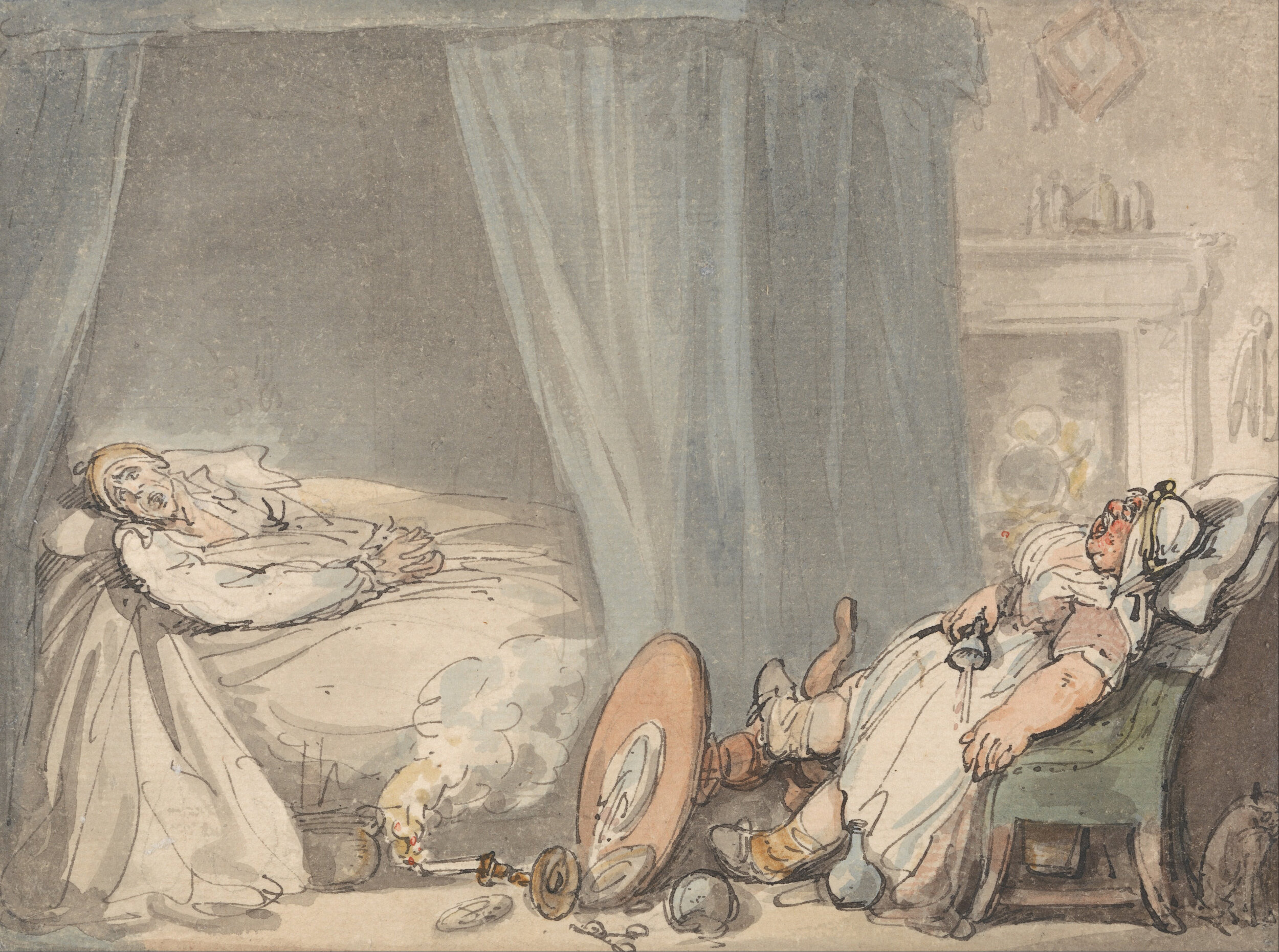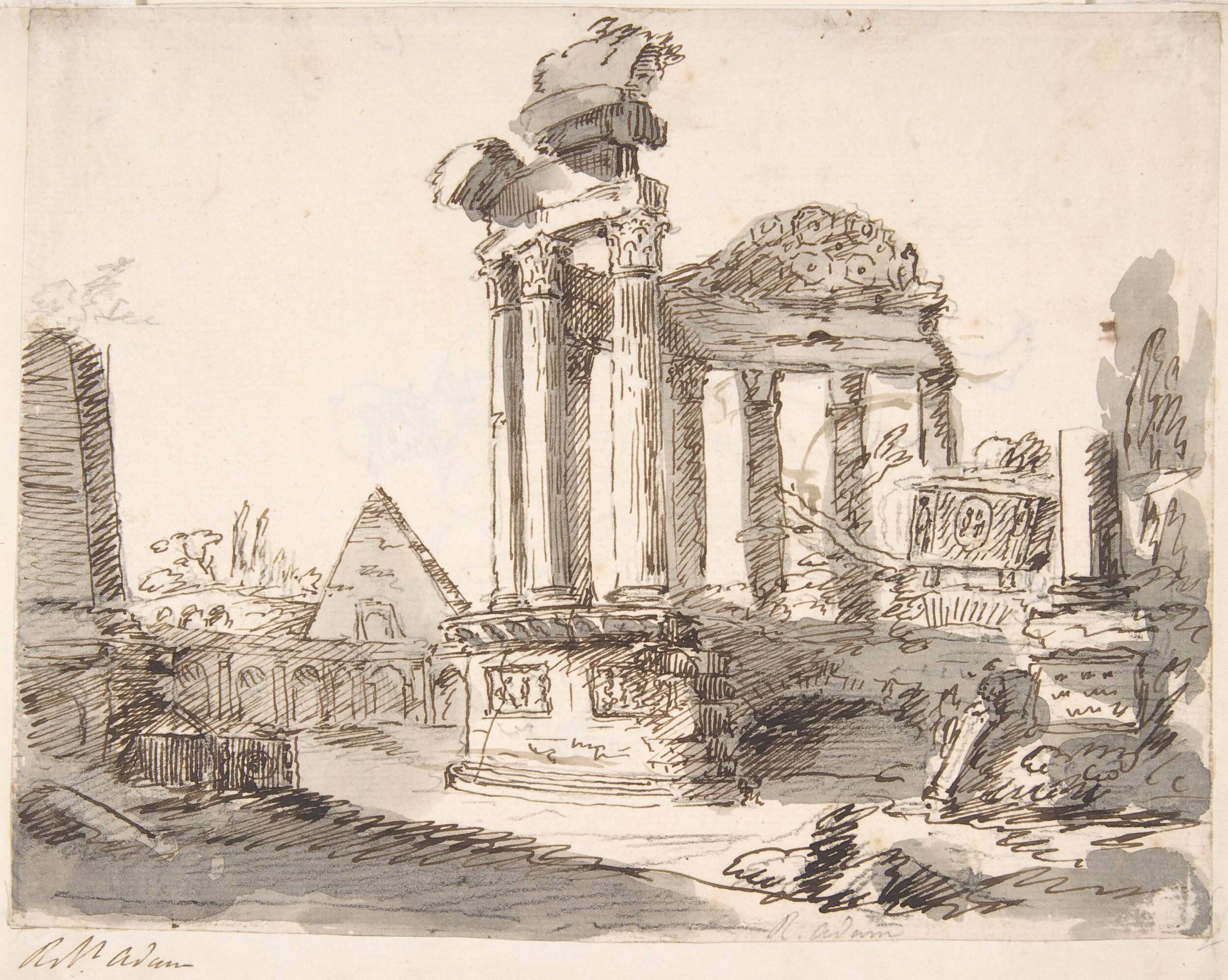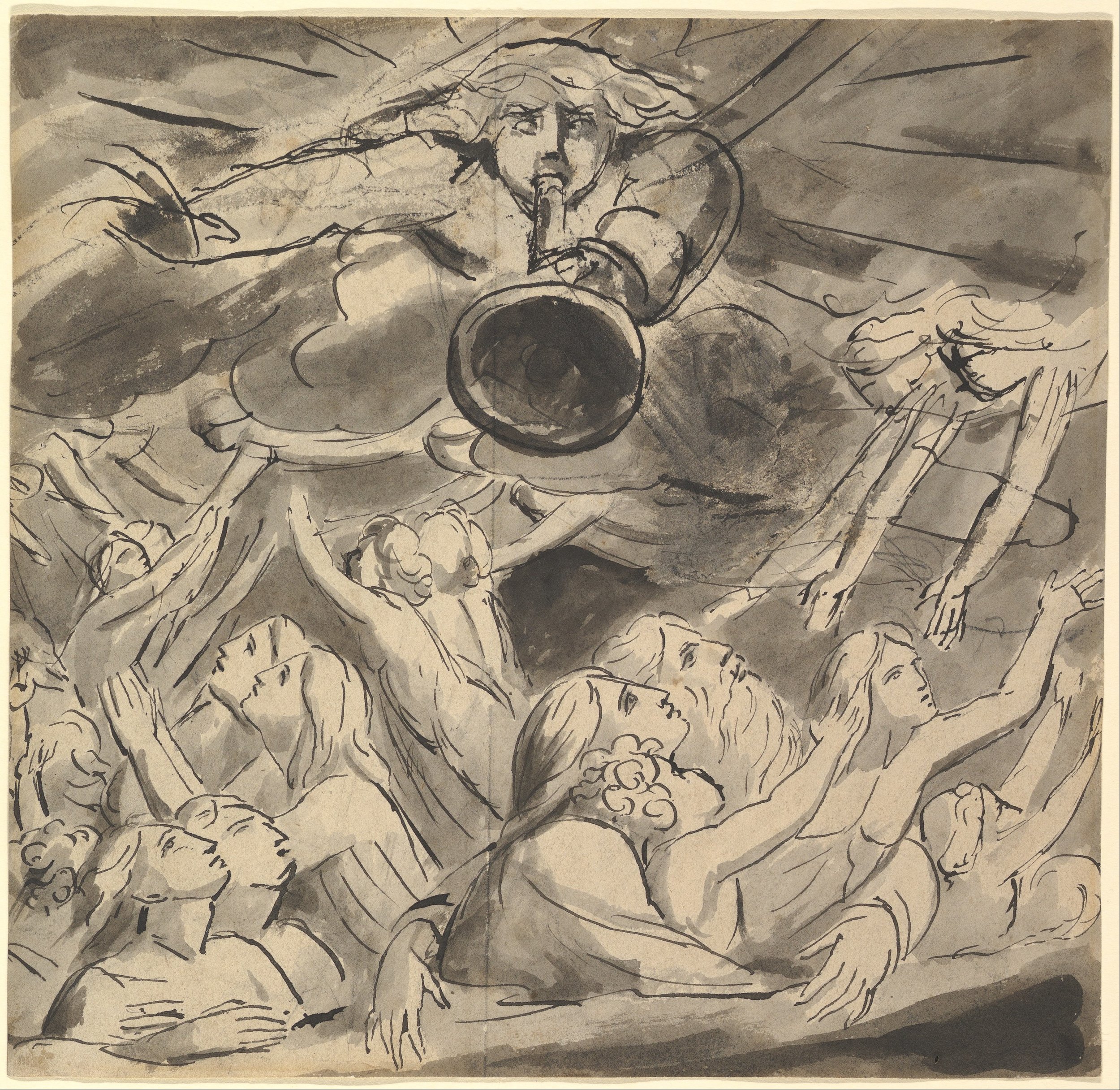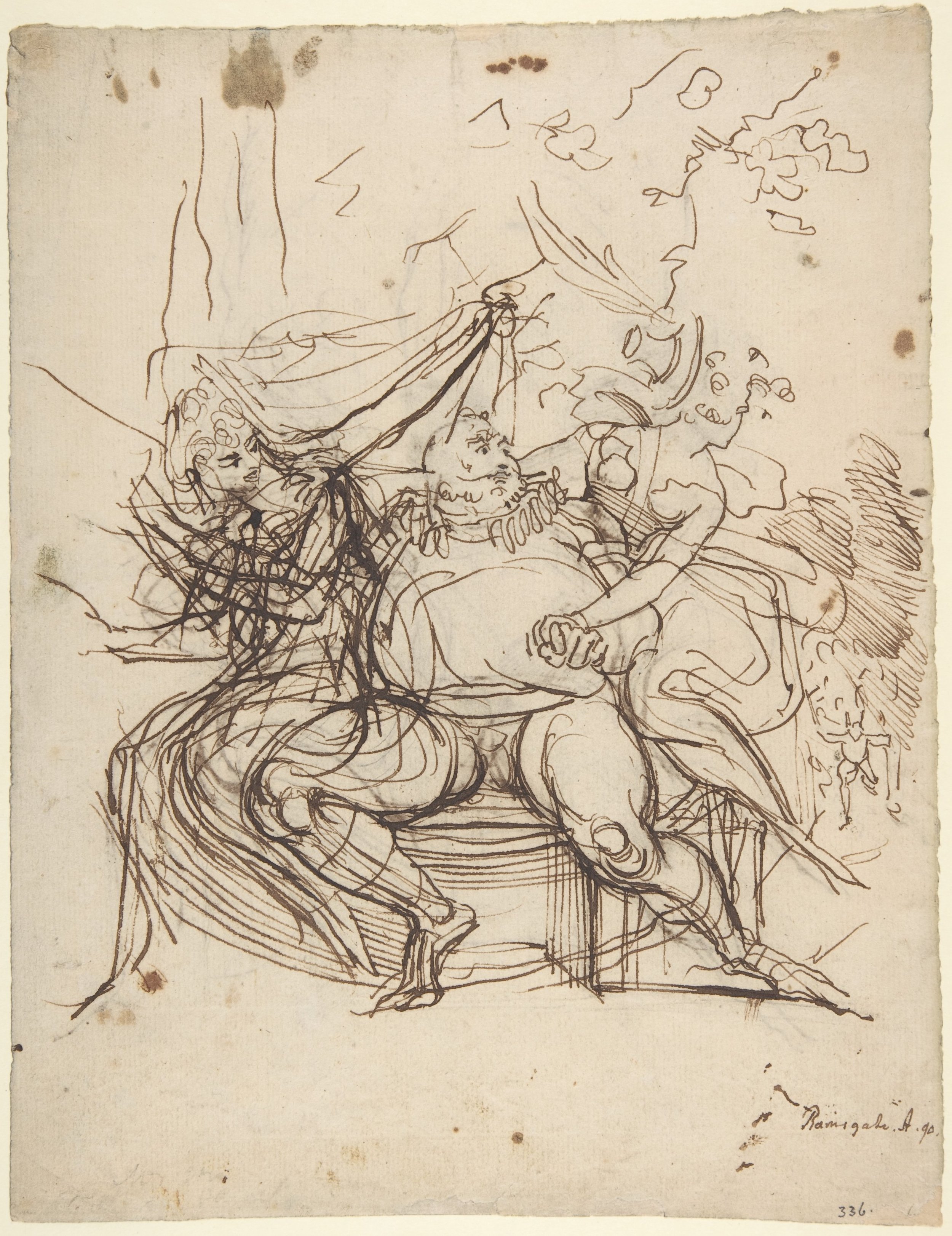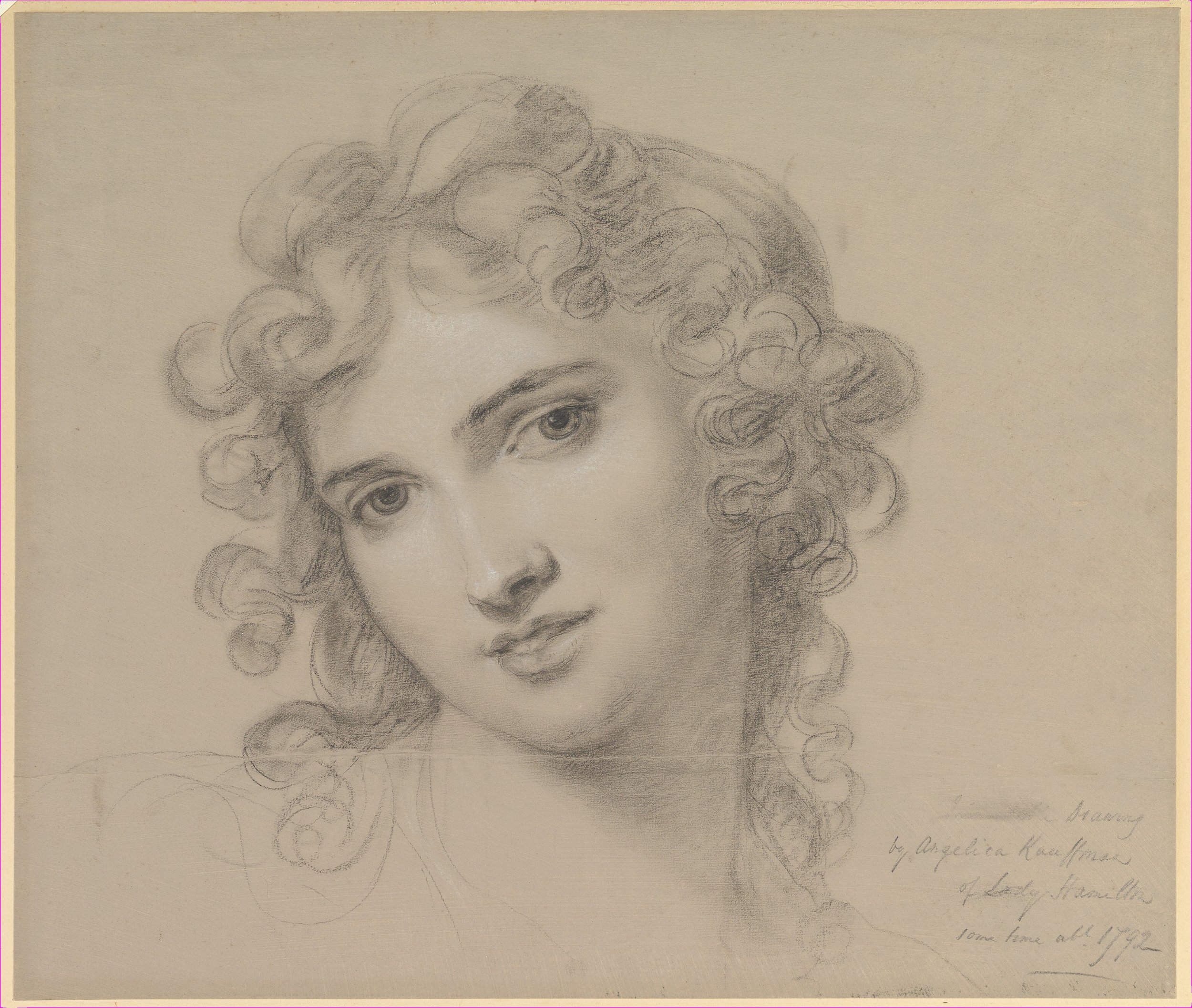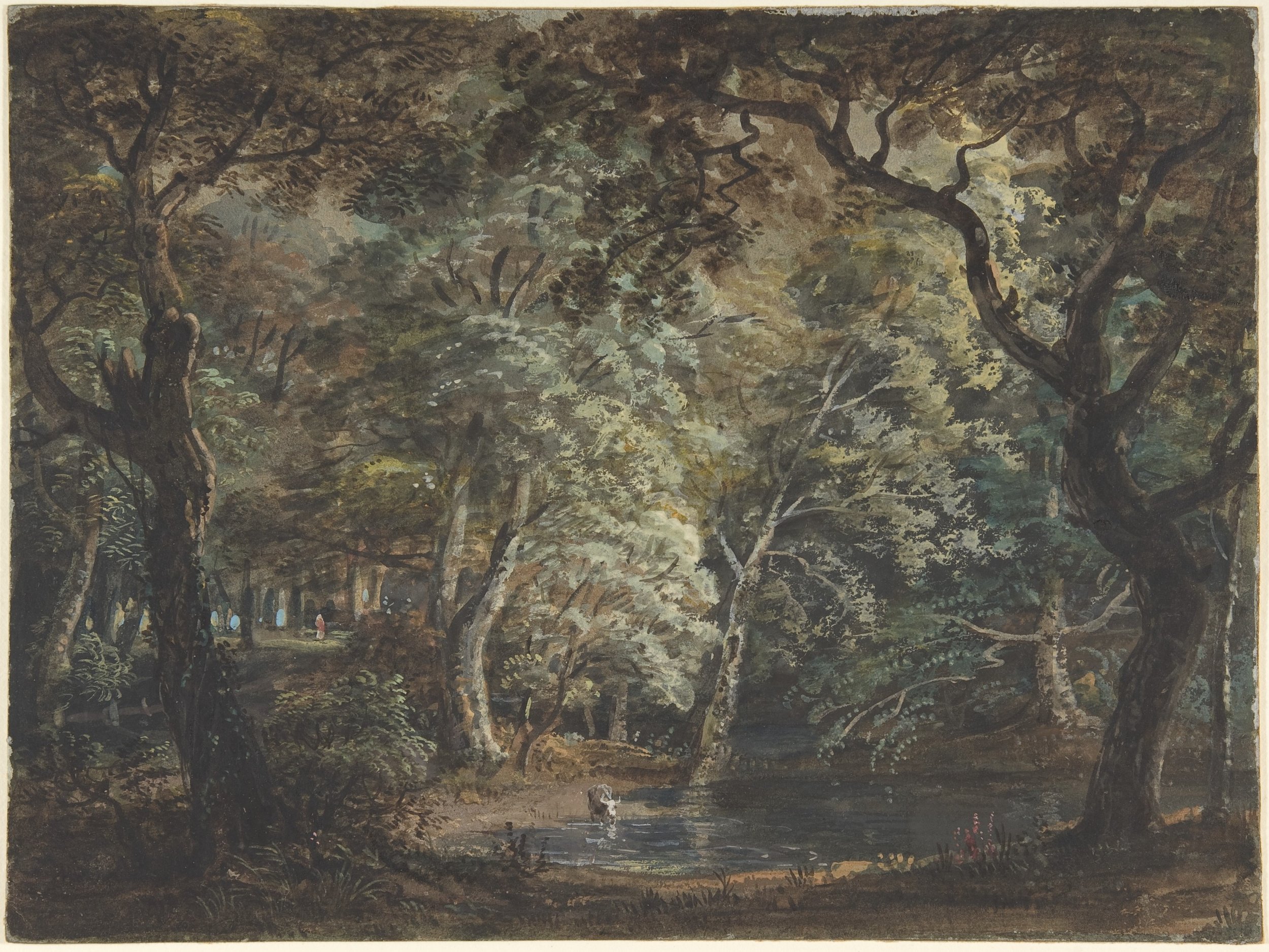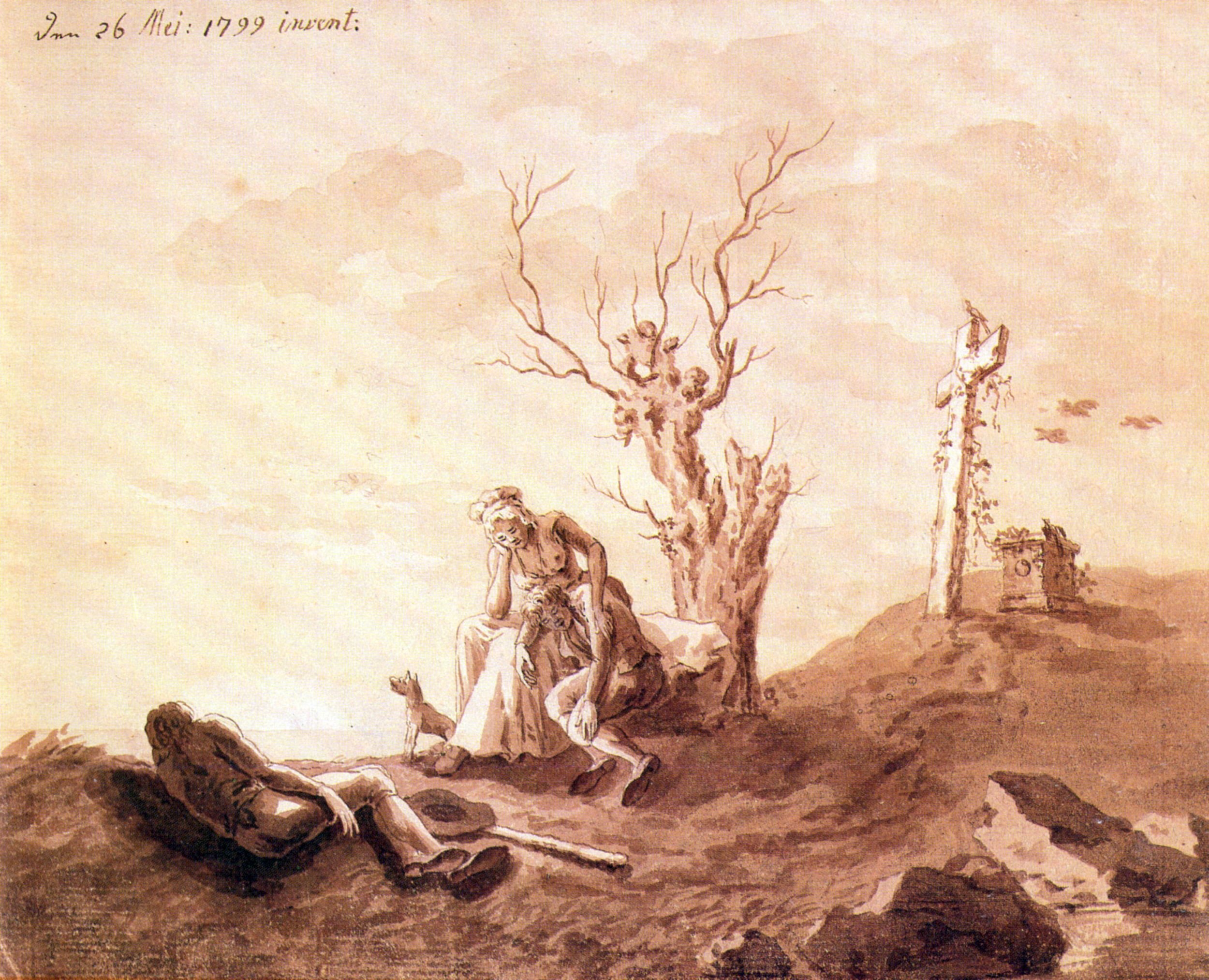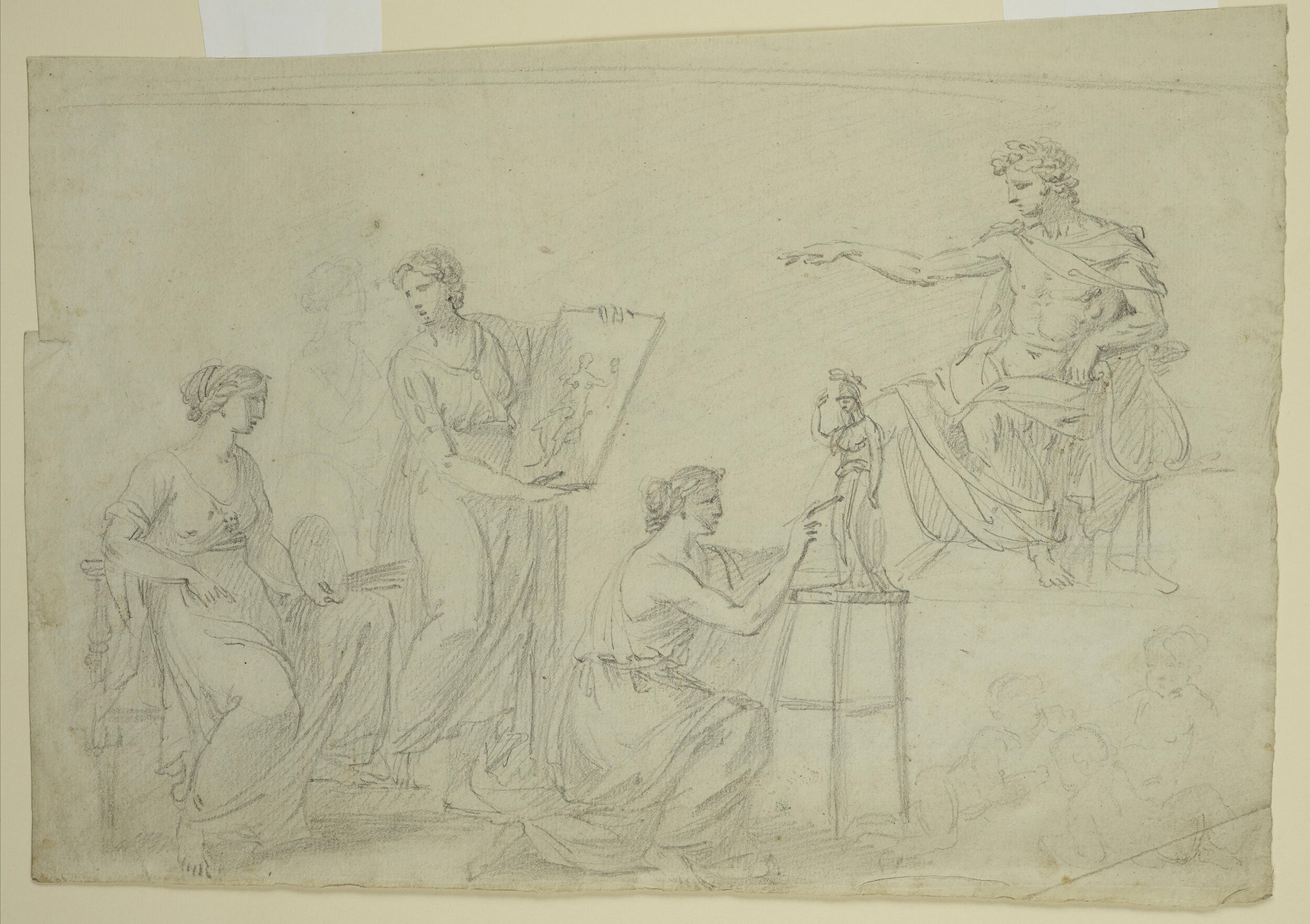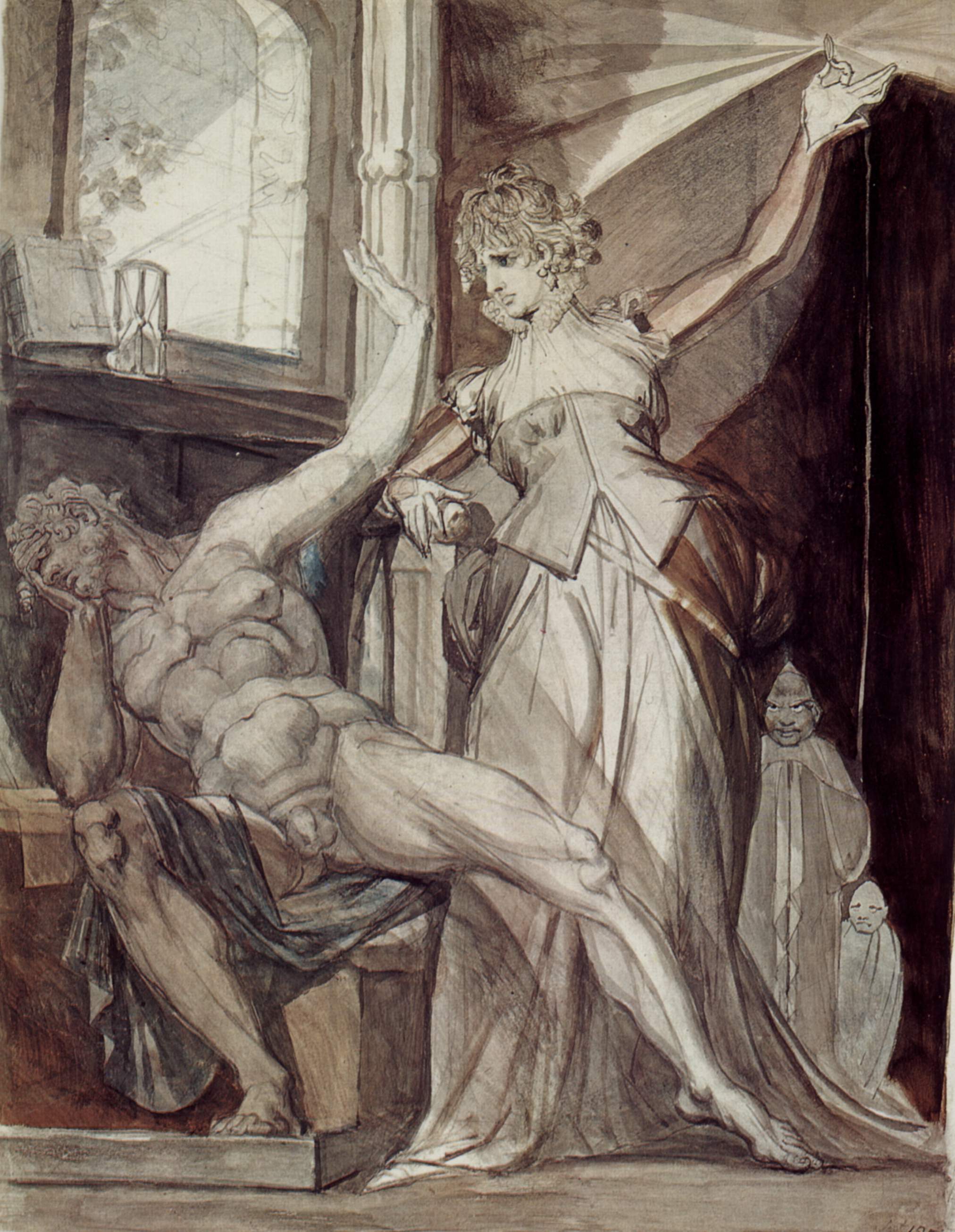GREAT BRITAIN & GERMANY
Two of the most memorable types of British drawing in this century were satirical subjects - like those of William Hogarth (1697-1764) and Thomas Rowlandson (1756-1827) - and portraits - like those of Thomas Gainsborough (1727-1788) and Sir Joshua Reynolds (1723-1792). Gainsborough also produced many landscapes, opening the way up for the wilder, romantic scenes of John Constable (1776-1837) and J.M.W. Turner (1775-1851) in the early 19th century. The Scot Robert Adam was one of several artists to sketch classical monuments on the Grand Tour. Angelica Kauffman (1741-1807) and Henry Fuseli (1741-1825) - both based in Britain though born in Switzerland - became known for historical, mythological and, in Fuseli’s case, supernatural subjects, although Kauffman was a fine portraitist too. By the end of the century, the German Caspar David Friedrich (1774-1840) had begun to produce landscapes in which solitary figures are silhouetted against awe-inspiring backdrops, and the visionary William Blake (1757-1827) was drawing scenes which combined religious and radical politics.
Featured
Noël Annesley, Honorary Chairman, Christie’s.
